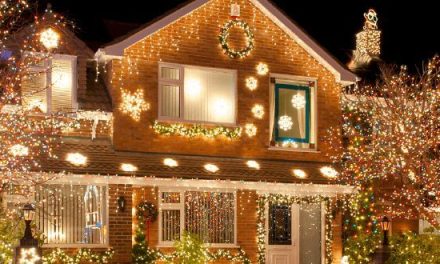 LED lighting is playing a key role in reducing global energy consumption. However, it is vital to understand the underlying factors that affect the efficacy and reliability of these products, as Jeanine Chrobak-Kando, business development manager, LED EUMEA, Verbatim, explains
LED lighting is playing a key role in reducing global energy consumption. However, it is vital to understand the underlying factors that affect the efficacy and reliability of these products, as Jeanine Chrobak-Kando, business development manager, LED EUMEA, Verbatim, explains
Light emitting diode (LED) lamps are rapidly replacing conventional incandescent lamps and compact fluorescent lamps (CFLs) in domestic and commercial lighting. Understanding the data that is presented with respect to lamp performance and operating life is the key to making informed product choices.
As printed on the packaging, or in a data sheet, typical LED lamp specifications will include power rating, the equivalent incandescent lamp rating, the operating voltage and frequency, the light colour emitted, its colour rendering index (CRI), luminous flux, operating lifetime, fitting type and whether the lamp is dimmable. In the case of directional lamps, the luminous intensity and beam angle may also be quoted. The table below shows a typical data table for an LED lamp.
Making sense of the data
The power rating is the amount of electricity consumed when the lamp is operating at full output i.e. without a dimmer. Where the lamps are specified as being dimmable, this usually means with a standard dimmer that may have previously been used with incandescent lamps. However, dedicated dimmers for LED lamps, which will be more efficient and give more precise control, are likely to become more commonplace in the future.
Luminous efficiency is covered by EU standard 244, which defines the equivalent incandescent lamp power for an LED lamp. This is perhaps the easiest way to understand how ‘bright’ a lamp will be. Typically, the equivalent incandescent lamp’s power rating will be 3.5 to 5 times the LED lamp rating, so today’s best LED lamps offer energy savings of up to 80% compared with incandescent lamps.
The light colour is expressed as the colour temperature in degrees Kelvin. LED lamps are classified as providing ‘warm white’ or ‘cool white’ light. Bright sunlight, perhaps at midday, equates to a colour temperature of around 5,500K and would be described as cool white. Rather confusingly, warm white light has a lower temperature, typically in the 2,500K – 3,000K range.
Colour rendering index (CRI) defines how accurately the light from a lamp reproduces colours of various objects, compared with an ideal or natural light source. Perfection is a CRI of 100. LED lamps based on blue chips plus phosphors are now achieving CRI of around 80 but within the next year or two, LED lamps with CRI of up to 98 will be available. This will be achieved through the use of violet chip technology.
Luminous flux, measured in lumens, is the level of light emitted by the lamp. Dividing this by the power consumed gives you an indication of the lamp’s efficiency and the result is expressed as lumens per Watt.
Potential failure modes of LED lamps usually involve a reduction in output, rather than the lamp failing totally. For this reason, the operating life of LED lamps is sometimes stated with respect to the time until the light output has dropped below a certain level – perhaps 70% or 50% of its original output. This is designated by L70 or L50 in the data.
The operating life of an LED chip itself is dependant upon temperature, so the location of the lamp, particularly with respect to available ventilation, will affect its life. This is one of the reasons why LED lamps of different types may have widely differing life expectancy. For example, it may not be as easy to cool a GU10 lamp as it is to cool an E27 replacement for a conventional incandescent bulb, simply because the latter has a larger surface area from which heat dissipates more freely.
Specifications for directional lamps may contain two additional pieces of data. The first is beam angle, which usually ranges from about 25° to 50°. The second is light (or luminous) intensity. This is a measure of the power emitted by a light source in a particular direction per unit angle. It is specified in candelas. There is a mathematical definition of a candela but it equates approximately to the light output of a typical candle.
Summary
A few major players have dominated the traditional lighting market in recent years. However, the transition to solid state lighting in the form of LED lamps is creating business opportunities for other materials and electronics companies to enter the sector, particularly from Japan. It is also creating a frenzy of activity from smaller, low cost producers, some of which are prone to exaggerated claims of their products’ performance.
Buyers of LED lamps need to understand the underlying factors that affect the efficacy and reliability of these products. Reputable suppliers will make data available that supports their product specifications and are far less likely to make performance claims that are not sustainable. With so many smaller, anonymous companies entering this high growth market, the advice ‘caveat emptor’ has rarely been more appropriate. However, high quality LED lighting has the potential to add real value whilst contributing to the world’s need to reduce our energy consumption.
Classic A E27 10W warm white
Product Features: LED retro-fit bulb as a replacement for 40W standard incandescent lamps – dimmable energy savings up to 75%
Wattage: 10W
Voltage: 220-240V
Operating Frequency: 50-60Hz
Light Colour: Warm white – 3,000K
CRI: >80
Luminous Flux: 480 lumens
Luminous Efficiency: 48 lumens/Watt
Lifetime: 35,000hrs = 16 years* (*at six hours per day)



